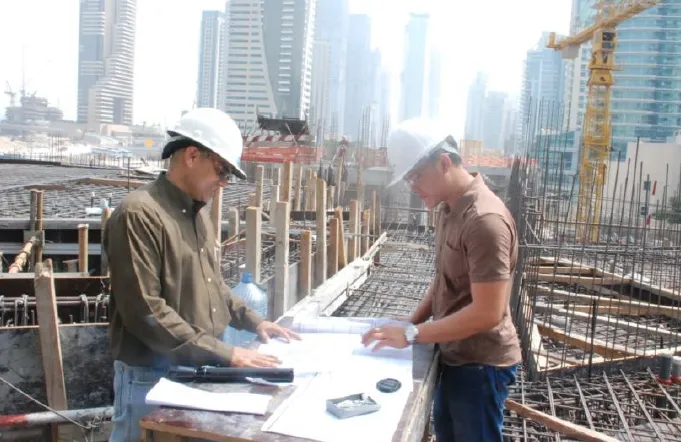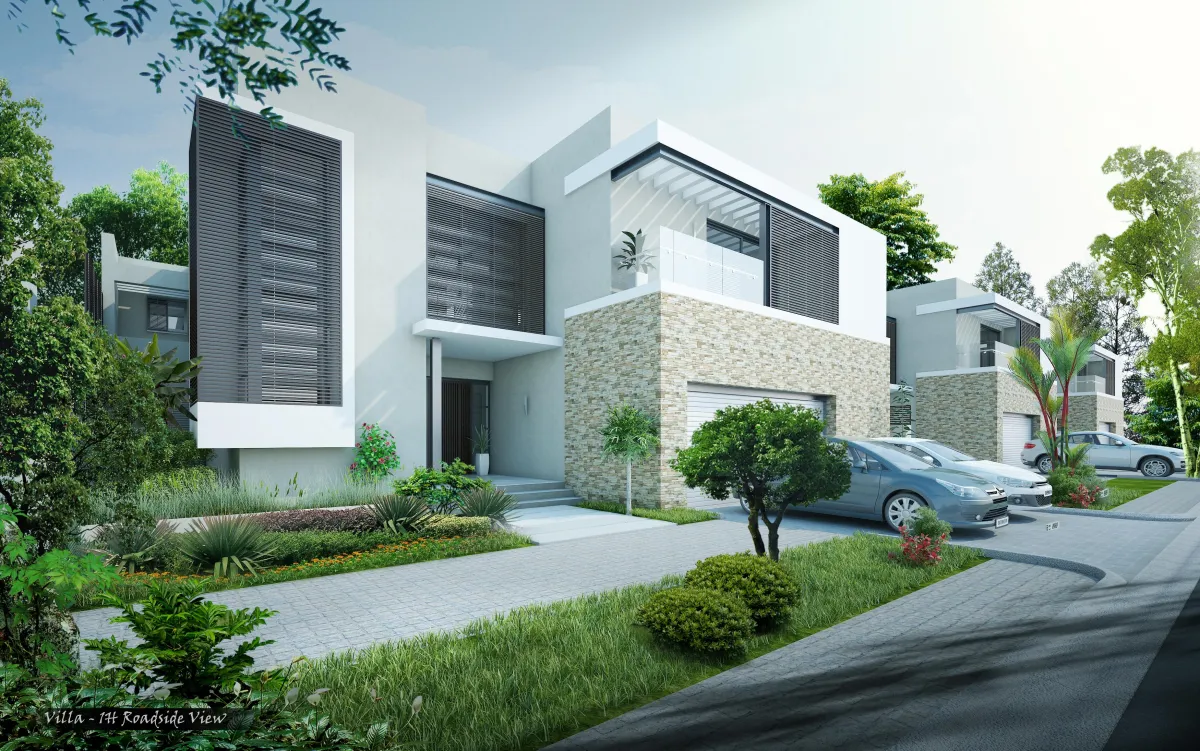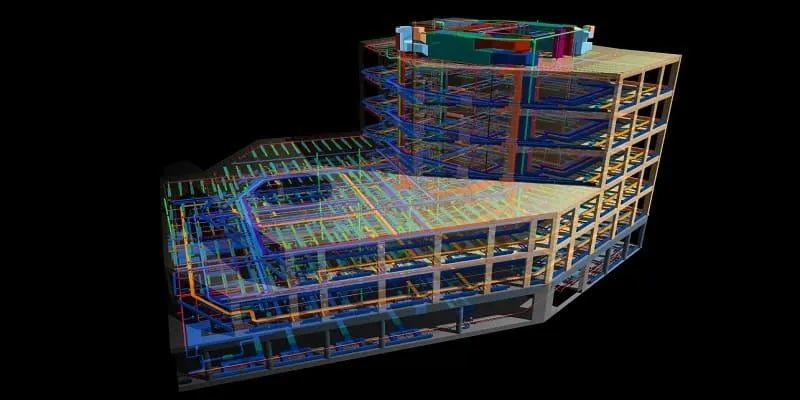Welcome to
ISLAND BUILDS

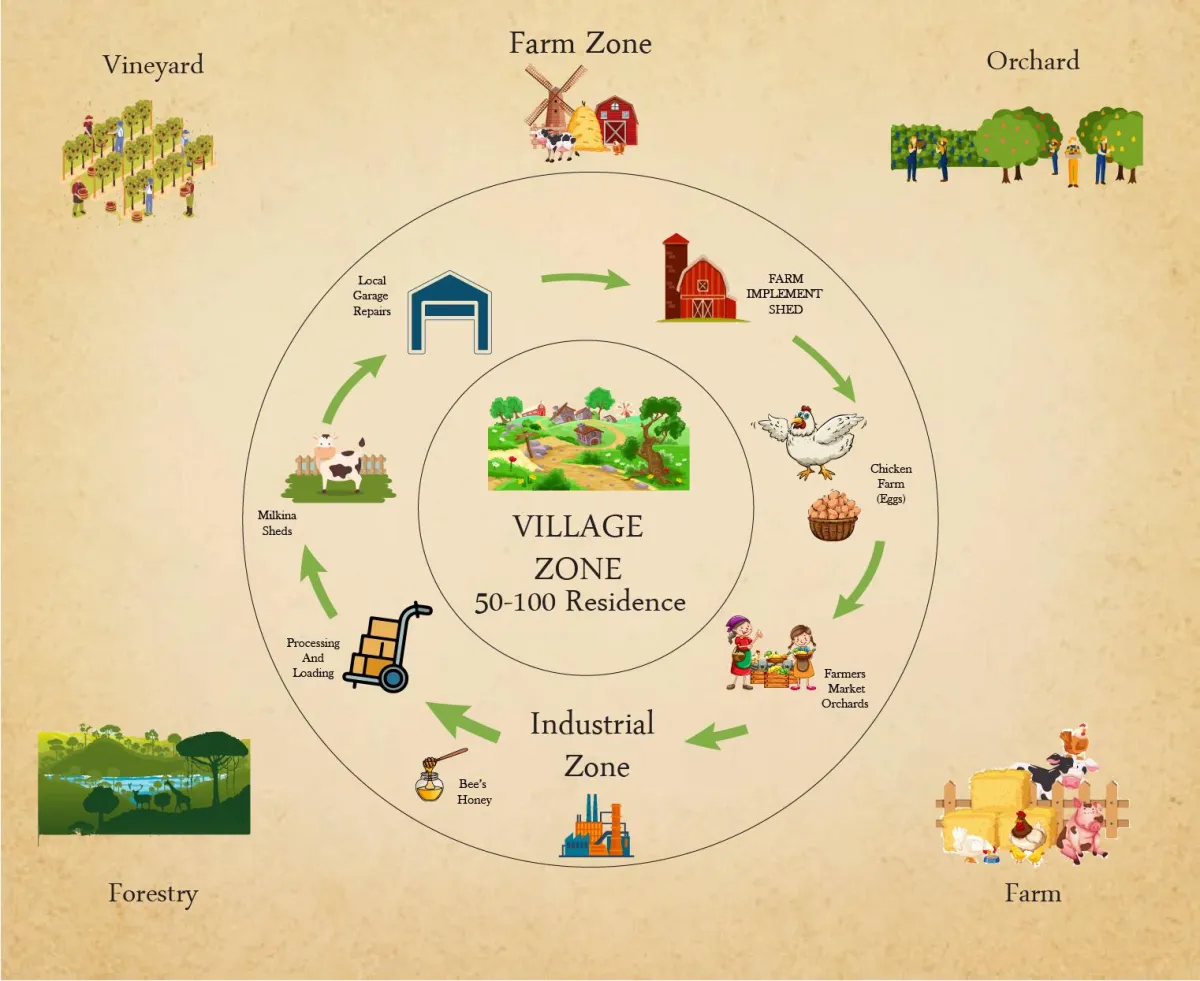
SMART FARM VILLAGE
SMART FARM VILLAGE
Objective: to create a resilient and sustainable SMART FARMING village.
Currently 70% of the population is living in urban areas and this is increasing. There is a little-known fact that the age of the average farm owner is increasing as their children have moved into the cities and have no interest in living the isolated farming life. When the farm owner retires, they are relocating into the urban areas to be cared for by their children. In New Zealand, the average age of the farm owners is 60 years old.
Therefore, the purpose of this report is to investigate ways to create resilient and sustainable farming, centred around a Village zone, capable of housing approximately 100 residents and providing the security and quality of life required for the modern world. The Village Zone would be made up of: Farm owners | Farm workers | Business owners from the Industrial zone | Residents | Researchers | Children | Retirees etc.
Surrounding the Village is the Industrial zone, containing all the infrastructure to keep the Eco/Sustainable village working such as:

A. Items that may be considered to be Essential for the Village to operate: Water and Energy storage | Organic waste and treatment | Sewage processing | Implement shed | Hay shed | Garage/Workshop | Milking Shed | Processing and loading area | Bees/Honey
B. Examples of items that would be optional and would add value to the village: Pig pens | Poultry/egg farm | Greenhouse | Farmers market/small orchard (nuts, coffee, cheese, etc) | Floral | Manufacturer | Organic farm | Micro farm etc
Finally, the Farm zone would be owned, worked, and maintained by the village residence. It would have its own eco/sustainable items to add to the project as a whole, and would include: Farms | Orchard | Vineyard | Forestry etc

HEATING – Combining Thermal Mass with Heat Exchange
VILLAGE AND INDUSTRIAL ZONE
Introduction
When products are combined and shared, within a smart village (being an integral pocket of the overall city) the result can have significant reductions to the energy used for heating and cooling, as a whole. The Earth to Air Heat Exchanger (EAHE) would be connected into Thermal Mass products within each dwelling and used with a Passive Solar and Energy Efficient Design Strategies (PSEEDS). The connected houses would also allow for connections to the neighbouring Industrial area.
Proposal
By connecting the neighbouring dwellings into the one system, increases the length and efficiency of the system as a whole “the amount of heat transfer from soil to air during winter season increased with increasing pipe number and length of EAHE system” (Hasan & Noori 2019). With the energy consumption very high at the peak of summer and winter in most countries, this drain on the energy grid can be significantly reduced “The maximum reduction in cooling load for a selected house using the EAHE system reached 10.34% …the summer season, while in the winter season the maximum reduction in heating load was recorded at 19.69%” (Hasan & Noori 2019).

By then incorporation products with a high Thermal Mass value within each dwelling, the energy usage would again be significantly reduced. Dense Thermal Mass products such as, concrete, masonry, dense solid timbers etc when placed in a well-constructed dwelling will see a vast reduction in the amount of energy consumed. “construction with the materials of higher R-value (higher thermal mass) will have dominant effect on reducing the cooling and heating energy requirements. Increasing the R-value of a house, by using a concrete slab for flooring and brick veneer walls, for example, can reduce cooling and heating energy requirements of both standard and improved houses by 35%” (Albayyaa, Hagare & Saha 2019).
Advantages
By combining these two products so that they work together in the most efficient state, it is proposed that the piping from the Earth to Air Heat Exchanger (EAHE) runs into each dwelling and through the centre each Thermal Mass product. The flowing air through the entire system would provide a consistent temperature within each dwelling. A good PSEEDS system alone can save up to 58% “If a brick veneer house is built incorporating PSEEDS, it is possible to save up to 58% of energy as compared to a standard fibro house.”(Albayyaa, Hagare & Saha 2019) and combined the EAHE system of nearly 20% in winter. Thus, reducing the overall winter heating consumption by nearly 80%.
Difficulties
This system has not been tested together and therefore assumptions have been made that would need to be proven. The amount of added value the neighbouring Industrial area would add to the system would depend on each individual place of operation and the materials used.
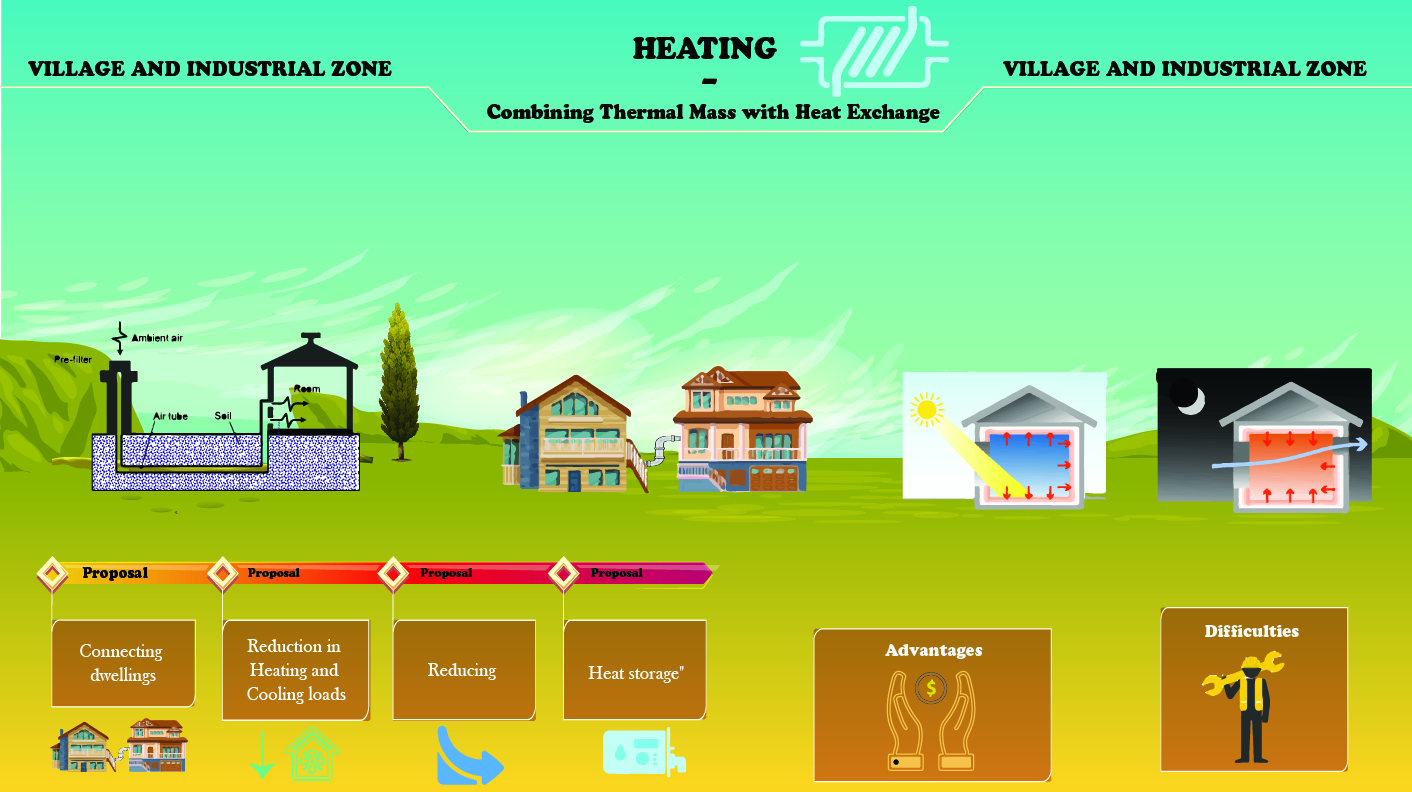
VENTILATION – Sola Chimney - VILLAGE AND INDUSTRIAL ZONE
Introduction
In addition to the previous items above is the use of a Solar Chimney. This type of product significantly increases the ventilation throughout the Dwelling or Industrial unit. Providing they are set up correctly, they have the potential to reduce energy consumption throughout all the seasons of the year.
Proposal

Increasing the natural ventilation within the building has a positive effect on the building by decreasing the energy usage demands.
(Hong et al. 2019)
The desired effect is to capture the cooler air above the building in summer and force it in the lower areas of the building, thus creating a cooling airflow throughout. In winter, the reverse effect occurs when the vent opening is pointed away from the prevailing winds and the warmth from the sun is captured through Thermal mass and retained inside the building.
Advantages
A Sola Chimney or Wind Funnel can run alongside any existing heating or cooling system. Thus, reducing the energy usage of such systems. The greatest energy savings when using a Solar Chimney occur in Spring at 52.3%. (Hong et al. 2019)
Difficulties
In the winter months, this system can be very difficult to manage if it is controlled manually, as heat can easily escape through the chimney. One would assume that a Smart system would eliminate all the risks associated with such a system by controlling airflow and using the wind direction to its advantage.
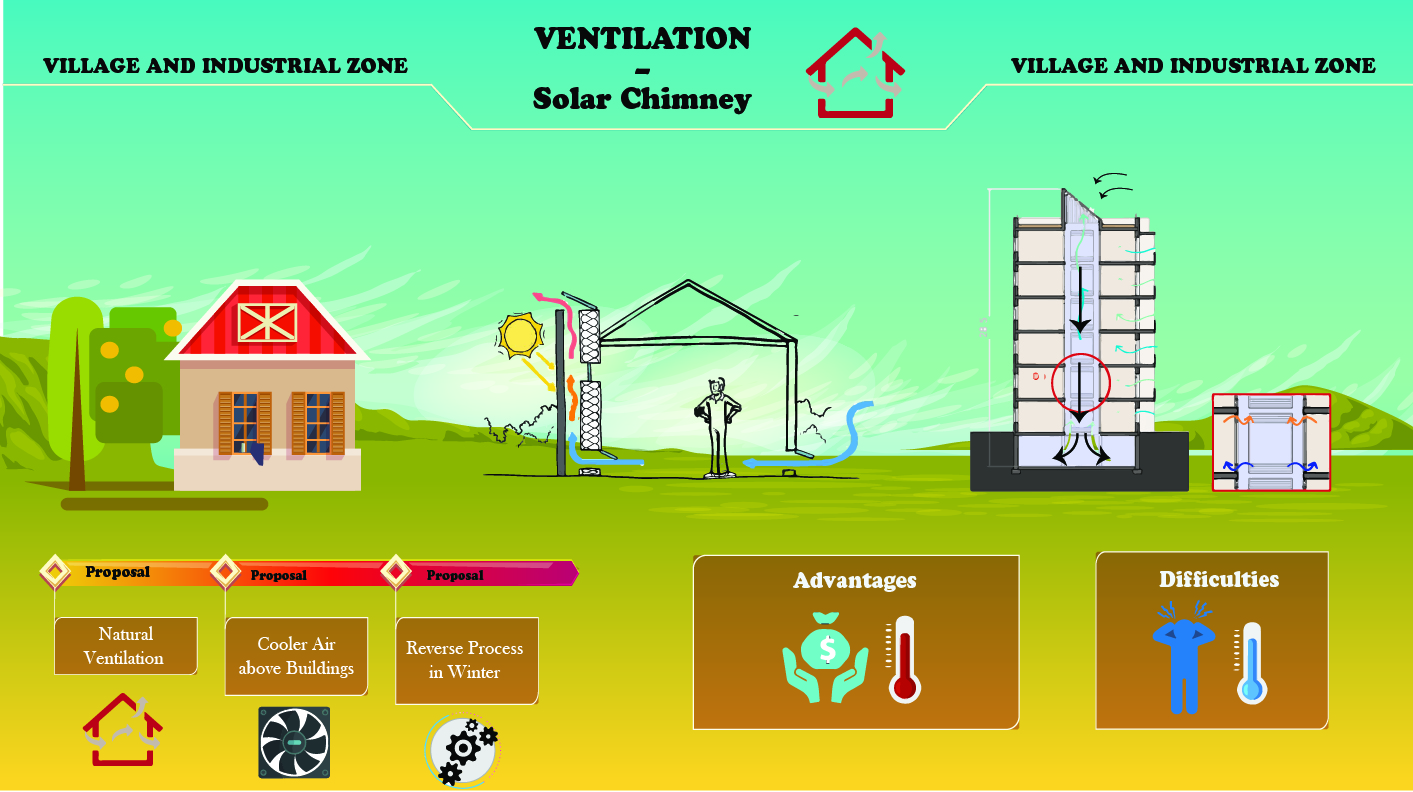
ENERGY – Battery storage
VILLAGE AND INDUSTRIAL ZONE
Introduction
In the interest of turning the entire Farm village into something more sustainable, all the energy being captured and saved from the items mentioned above needs to be stored to compensate for on-peak and off-peak periods. New farm equipment (tractors, bikes etc) are now available with electric motors that need to be charged from all this saved energy.
Proposal
There are many ways to capture energy in a Smart village concept. In some cases, this can be feed back into the grid, but for those preferring to be more self-isolated, a dedicated energy storage area would need to be set up. A study completed by (Heine, Thatte & Tabares-Velasco 2019) found that energy usage from the Grid, dropped from 39%-42% to a massive 98% during on-peak periods. The most efficient way to complete this would be by inter-connecting the entire village around a grid system and feed to and from a battery storage area. As most power grids already implement such a grid, it would be easily implemented.
Advantages
The advantage of a Smart village is the ability to have the battery storage in one or two areas around the village and supplying the whole village. Therefore, even when a building is vacant, it would still be feeding energy into the battery storage for everyone to use.
Difficulties
The current price of batteries may not make this advantageous, but as prices continue to drop, and batteries improve, this is fast becoming more beneficial. “A sensitivity analysis on future battery prices confirms that until battery costs are reduced substantially, buying large battery system initially and avoiding replacements provides the maximum economic benefit.” (Heine, Thatte & Tabares-Velasco 2019)
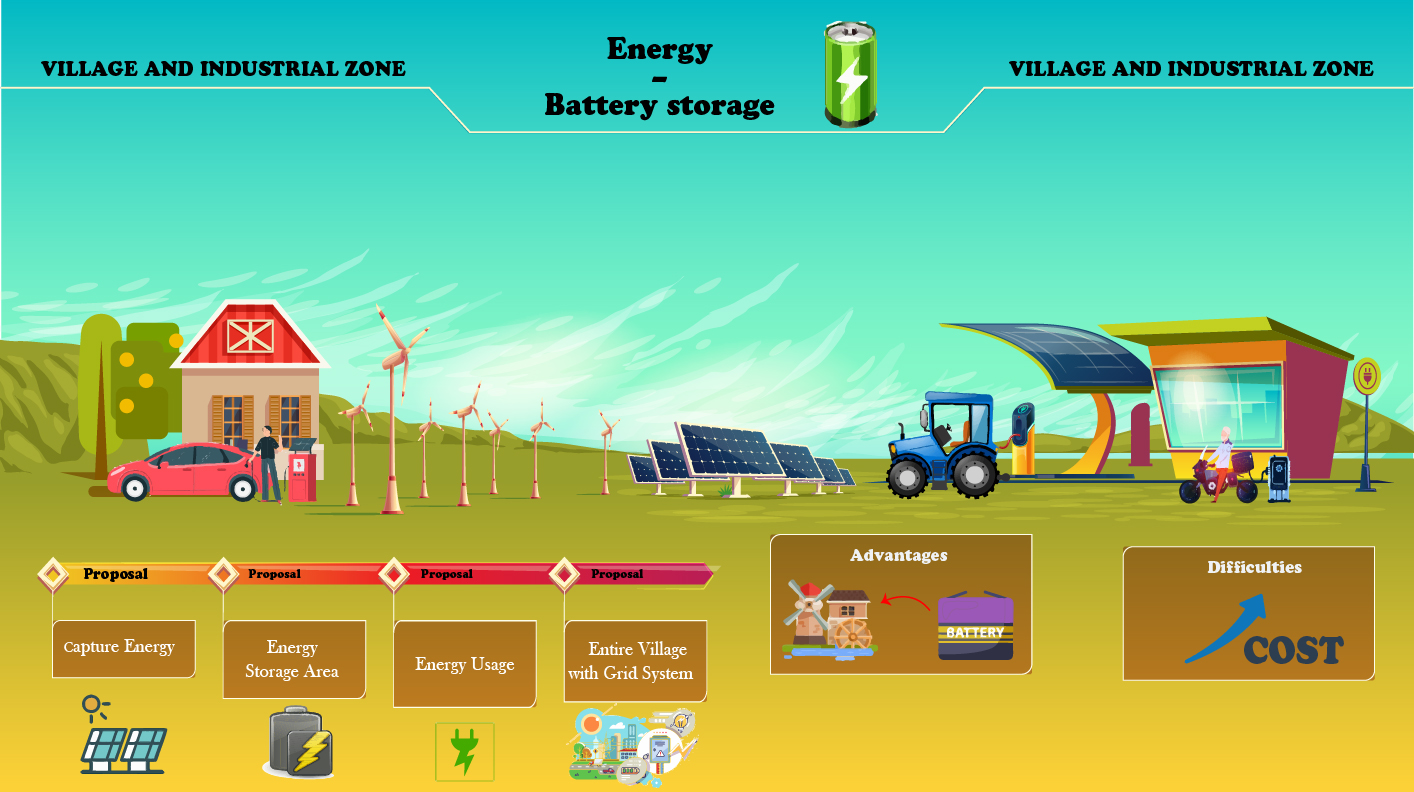
WATER – Water Harvesting
VILLAGE, INDUSTRIAL AND FARM ZONE
(Fences become Fog/Dew collectors in the Farm zone)
Introduction
Water reserves are becoming much less sustainable than they were in the past, mostly due to the population increases while still relying on outdated catchment and treatment systems. In Farming there is more demand for increased water supply, resulting in better crops, and claims that excessive deep-water pumping is lowering the water table and drying up the water ways.
At the time of writing this article, the far north of New Zealand is in an ongoing Drought for the past 5 months, and it is now mid-Autumn.
Proposal
Dew nets can be placed on the sides of buildings to harvest additional water from all the condensation throughout the night. “water collection from fog and condensation in the night.” (Bhushan 2020a). The average two story house in New Zealand, on the southern elevation, is approximately 10m2. The daily average that Water harvesting nets should collect is about 22l/day/m2, therefore an average of 220 litres of water per day would be collected. “a daily average of fog water collection was about 2.3 l m−2 and a daily maximum of about 13 l m−2” (Bhushan 2020b). This could be easily feed into the existing rainwater catchment systems. The neighbouring industrial buildings would harvest a much larger ratio as most have very little window area.

The average 100-acre farm has at least 5,000 meters of boundary fences (not including internal fencing). If the fences were replaced with one-meter high Dew Nets then each farm could harvest up to 11,500 litres of water per day which can be used for watering stock and irrigating crops.
Advantages
Water harvesting as advanced a lot since it’s early days. An example is the triple layer nets that greatly enhance the efficiency of the nets. “Here, we formalize the fundamental trade-off associated with the capture of fog with multilayer collectors and demonstrate that simple design rules can guarantee nearly optimal fog collection efficiency” (Azeem et al. 2020)
Difficulties
Dew nets will require a large amount of piping to duct the water to storage containers. Around a farm, these storage containers can used as watering troughs for the animals or feed the irrigation systems. In some regions there is also the possibility of high winds causing damage to the nets. The writer believes that the use of a ‘sacrificial shear pin’, which would allow the nets to blow over, would prevent such damage. This would need to be tested.

WASTE– Faeces into energy
VILLAGE, INDUSTRIAL AND FARM ZONE
Introduction
Dried dung has been used as a fuel source for fires since prehistoric time. As there is a large amount of faecal matter involved with farming, and there are new techniques now available for processing the faeces. Turning the faeces into Charcoal or briquettes would be one of them.
Proposal
The amount of Faecal matter that is not used for fertiliser, which is mostly liquid, the remainder can be processed and turned into “bio-coal briquettes made from feces as an alternative solution” (Fiza, Irvan & Shalihin 2020). Faeces collected from the septic system, cow sheds and shearing sheds etc, can be collected. This is then dried, and a binding agent added, such as starch or saw dust. After the briquettes are formed, they are dried and ready for use. (Ward, Yacob & Montoya 2014) This can then be used as a clean burning fuel to run furnaces, wood burners and cooking.
Advantages
Briquettes made with high heat and a 10% Starch content have a heating value that matched commercial charcoal briquettes while having a longer life. “Briquettes made with 10% starch had an average impact resistance index of 79 and a higher heating value of 25 MJ/kg. These values are comparable to those of commercial charcoal briquettes, making fecal char briquettes a potential substitute that also contributes to the preservation of the environment”. (Ward, Yacob & Montoya 2014)
Difficulties
“The process of making briquettes Fecal quite complicated, but not too difficult to put into practice. A simple process that can be done” (Fiza, Irvan & Shalihin 2020)
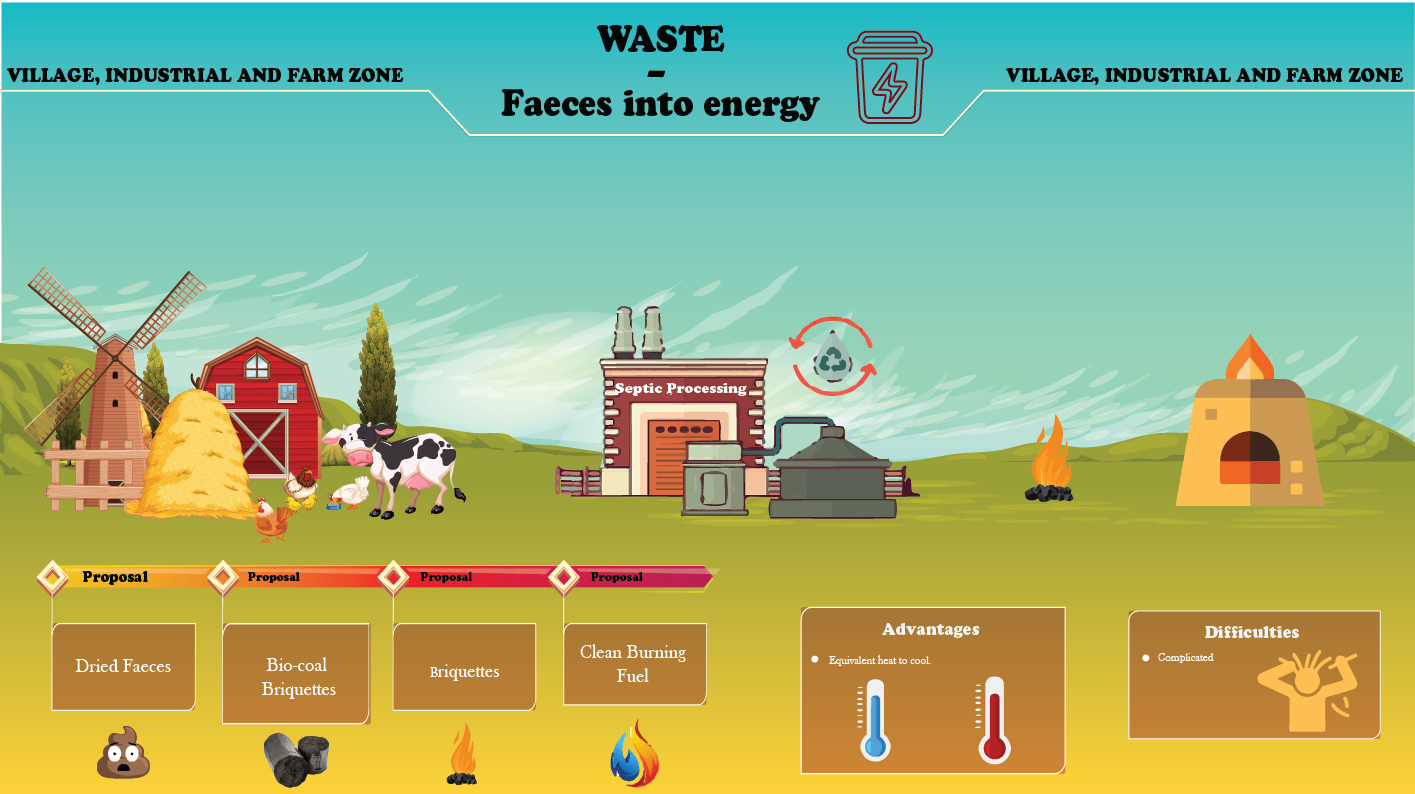
REFLECTIVE SUMMARY
Farming, and the communities around it have changed a lot over recent years. There are those who look for the more traditional and natural ways of farming, and those who succumb to mass production and find the fastest way of producing their stock or produce. Either way, there are two main areas of concern. First, the farming community has aged due to the younger generations not returning to the farms after completing their studies and avoiding the isolation of the farming life. Second, Farm’s operate under mass amounts of energy. Machinery, plant, water, irrigation etc need to be updated in ways that promote resilient and sustainable farming in the future. There are literally countless ways to improve the Resilience and Sustainability of a farming village such as this. We have covered some of the main items in this report, but more could be done with the likes of Regenerative farming, Wind turbines, Sola roofing tiles, airflow and wind direction to name a few.
We have learnt ways to capture the energy around us to reduce our demand for energy. By using the natural resources around us, we can minimise the amount of energy needed to heat or cool a building. If this is then stored into products with a high Thermal mass ecoefficiency and storage batteries, then our use of energy is greatly reduced. This in turn will reduce our demand for energy at on-peak times resulting better efficiency of the energy stored in batteries. It is the magic of combining different proven methods that gives the most economic results.
New ways of storing water are being copied from nature and proving to be very beneficial in barren areas around the globe. Dew/Fog nets is one such product. Although it may be a slow produce the required water, it is a case ‘set and forget’ for a consistent supply of clean usable drinking water. The installation of such a product in and around the farming village will significantly reduce the amount of water that removed from our existing water sources and improve the surrounding environment.
Waste products related to villages and farming can be quite high. Traditional septic systems often fail and need regular maintenance. By turning this waste into something usable and environmentally friendly product, a village or farm can reduce their impact on the environment and become more sustainable in the long term. There may be some who would prefer not to use such a product for cooking, but there will still be many other ways that such a product can be used such as furnaces, boilers and central heating systems.

REFERENCES
Albayyaa, H., Hagare, D. & Saha, S. 2019, 'Energy conservation in residential buildings by incorporating Passive solar and Energy efficiency design strategies and higher thermal mass', Energy and Buildings, vol. 182, pp. 205-13.
Azeem, M., Guérin, A., Dumais, T., Caminos, L., Goldstein, R.E., Pesci, A.I., de Dios Rivera, J., Torres, M.J., Wiener, J., Campos, J.L. & Dumais, J. 2020, 'Optimal design of multilayer fog collectors', ACS Applied Materials & Interfaces, vol. 12, no. 6, pp. 7736-43.
Bhushan, B. 2020a, 'Design of water harvesting towers and projections for water collection from fog and condensation', Philos Trans A Math Phys Eng Sci, vol. 378, no. 2167, p. 20190440.
Bhushan, B. 2020b, 'Design of water harvesting towers and projections for water collection from fog and condensation', Philosophical Transactions of the Royal Society A: Mathematical, Physical & Engineering Sciences, vol. 378, no. 2167, p. 1.
Fiza, M., Irvan, L. & Shalihin, A. 2020, 'Study of biomass briquettes made from human feces', IOP Conference series: Materials science and Engineering, vol. 725, p. 012048.
Hasan, M.I. & Noori, S.W. 2019, 'A study of the potential of using the Earth to air heat exchanger for cooling and heating of residential buildings in Iraq', Heat transfer-asian research, vol. 48, no. 8, p. 26.
Heine, K., Thatte, A. & Tabares-Velasco, P.C. 2019, 'A simulation approach to sizing batteries for integration with net-zero energy residential buildings', Renewable Energy: An International Journal, vol. 139, pp. 176-85.
Hong, S., He, G., Ge, W., Lv, D., Wu, Q. & Li, Z. 2019, 'Annual energy performance simulation of solar chimney in a cold winter and hot summer climate', Building simulation, vol. 12, no. 5, pp. 847-56.
Ward, B.J., Yacob, T.W. & Montoya, L.D. 2014, 'Evaluation of solid fuel char briquettes from human waste', vol. 48, pp. 9852-8, https://ezproxy.aut.ac.nz/login?url=https://search.ebscohost.com/login.aspx?direct=true&db=edswsc&AN=000340701800109&site=eds-live.
DAVID STERLING | 2020 | Auckland University of Technology | Master of Construction Management | Advanced Built Environment | Smart Farm Village
